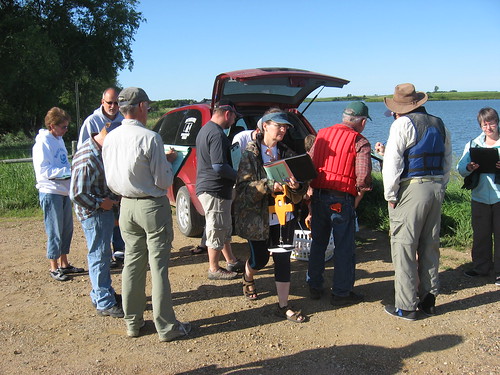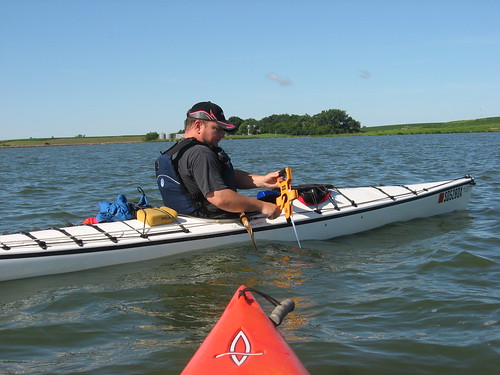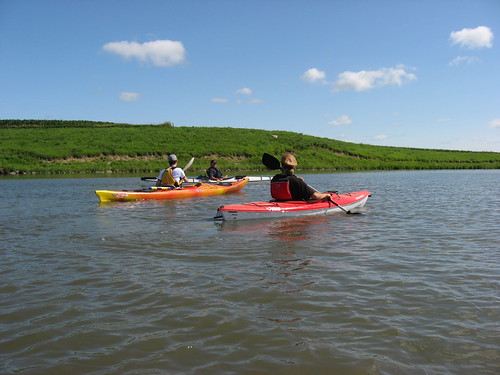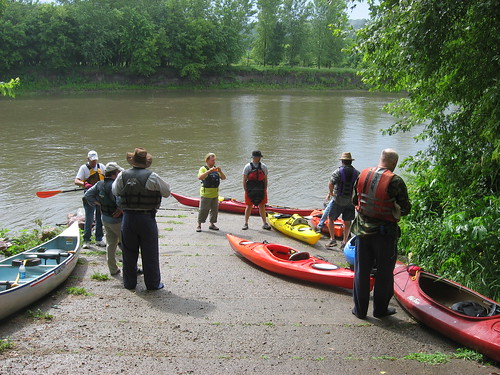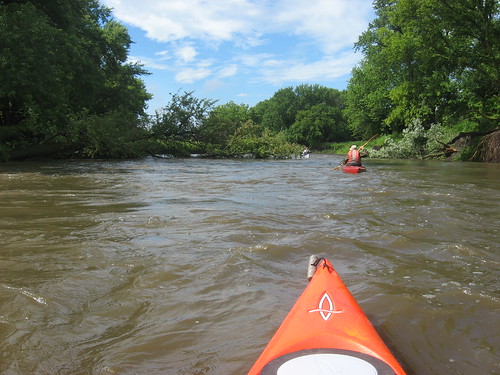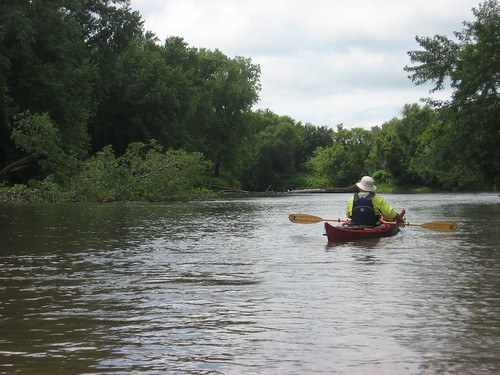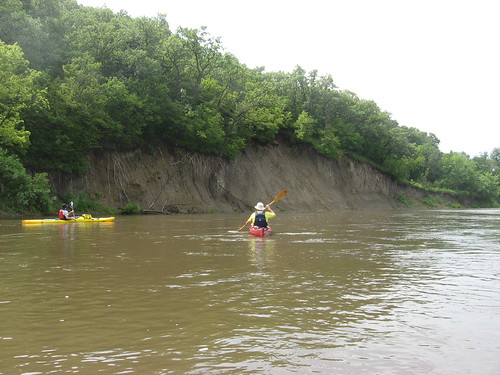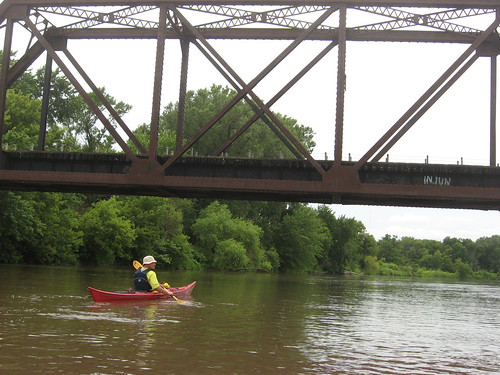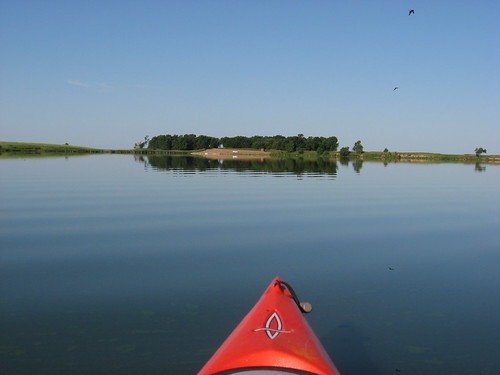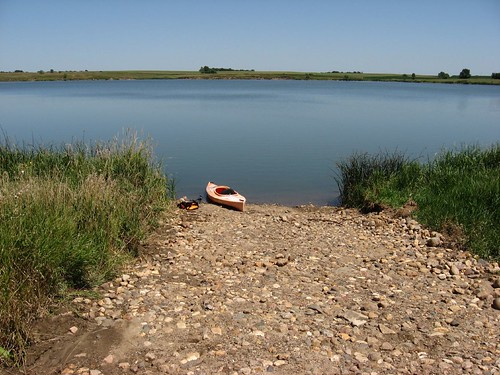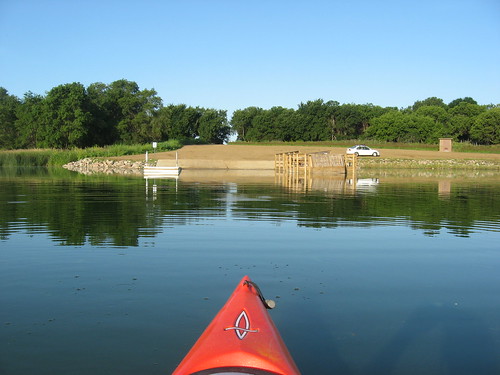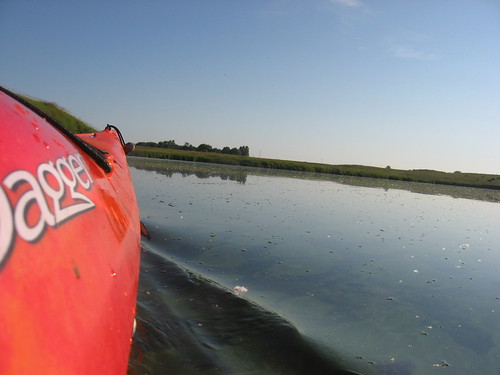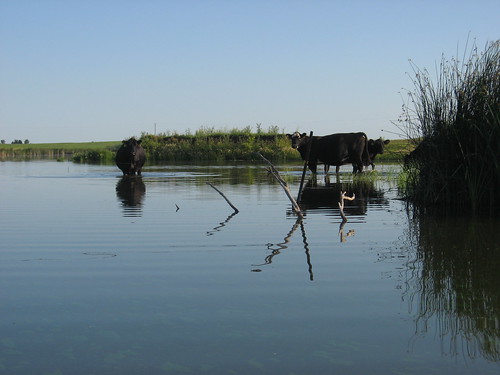
Taking advantage of a cooler day with light winds, I decided to go out to the Lake Vermillion State Recreation Area for a cruise up the west side of the main body into the east fork of the Vermillion River. Lake Vermillion is shaped rather like the letter “J” with the main part of the lake running north and south. At the south end of the lake is a dam along with an arm that extends to the west up into the marshes of the Battle Creek area. The main part of the lake extends north about three miles from the dock in the park to the entrance into the east fork of the Vermillion River. As a paddler travels north on the lake, the body narrows at the northern end where it runs into the river. There is little current in the river because of the impoundment, but there is good depth for at least a couple of miles, and perhaps further. The surface area of the lake is 513 acres, nearly six times as large as Lake Alvin.
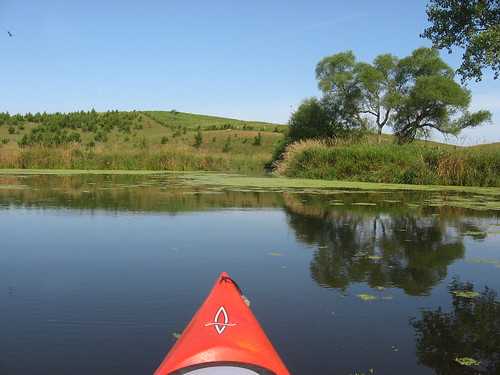
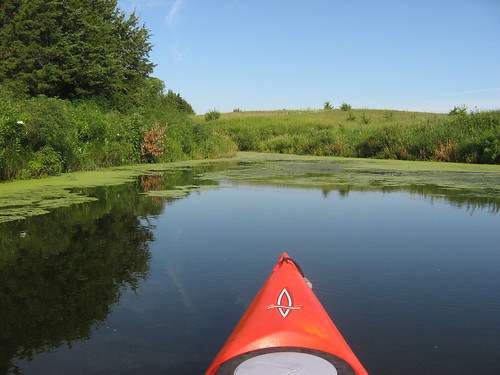
There are three bays along the west side of the lake that extend inland. I like moving up these waterways to check out the wildlife and flora. In one of the bays, I found both the underwater and surface plant growth to be so heavy that I just glided along on top of the plant material using the flat surface of my paddle. In the largest bay, there is a feeder creek coming into the lake, but there was a barbed wire fence a little way in that closed off further entry.
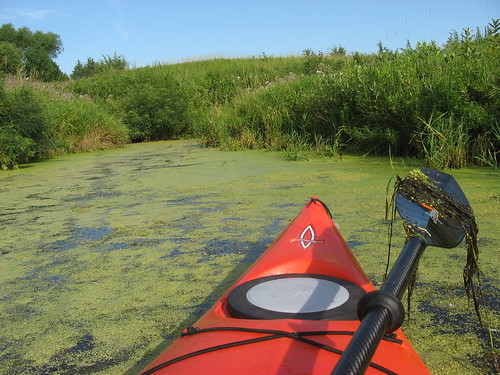
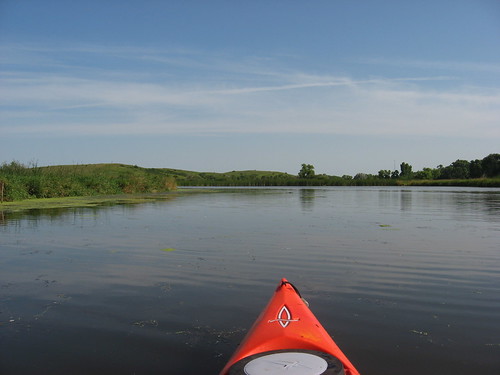
I was particularly interested in moving up into the Vermillion River, and arrived at that point about an hour and fifteen minutes into the cruise. There was a wind out of the north at about 15 mph, and I thought that the return trip back to the dock would be easy. I brought along my sail, and the plan was to continue up into the river for a couple of miles and then to use the sail to ease my paddling back to the dock. So, I continued up the river until I reached a light tower that was visible way back on the main body of the lake. This tower, I think, must be a signal used by the airport to keep aircraft on a glide path to the runway further east. At least, there is a white beacon light flashing from the top and no other obvious function for the tower. The river was full and the water was deep across the entire channel. After about two hours of paddling, I wanted to get out of the boat and walk around a bit. Unfortunately, however, there was no place to easily get ashore. The water was deep right up to a vertical bank, and then big marsh plants were thick alongside. This situation makes getting out of a kayak a little tricky. There were no shelving areas along the course of the river for that entire two miles or so.
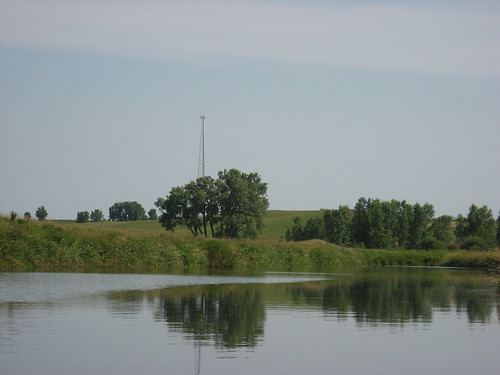
There was lots of bird life along the marshes and in the river, including great blue heron, egrets, and hawks. I did not see any pelicans today, nor were there any geese. While not present in overwhelming numbers, there were a few jumping carp; in fact, my kayak was struck a couple of times by surfacing carp.
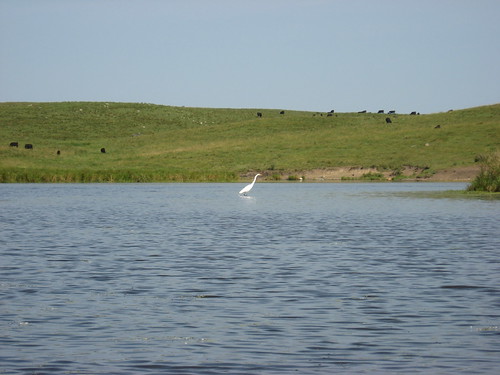
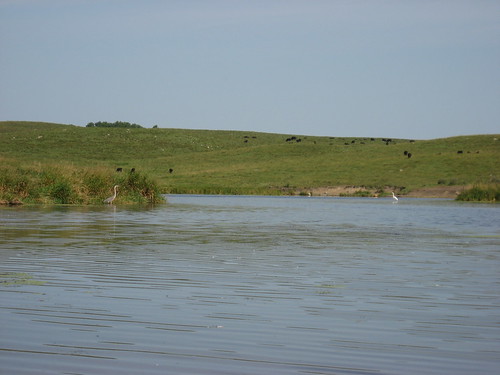
When I got as far up the river as I wanted to go, I got my sail ready and anticipated a leisurely ride back to the dock with a nice assist from the steady 15 mph breeze out of the north. To my chagrin, however, I found that I had left the mast step to hold the sail onto the boat in the trunk of my car. So, I had the sail but no step to secure it to the hull. The plan for a five-mile ride in the shade back to the dock was shattered. I was also pooping out from the long paddle into the wind. The long slog back down the lake and over to the dock was tedious: 100 driving strokes, 100 easy strokes, a few minutes of holding the sail up like an umbrella – a routine that kept me moving. I just churned down the middle of the lake trying to cut corners and keep into the following wind.
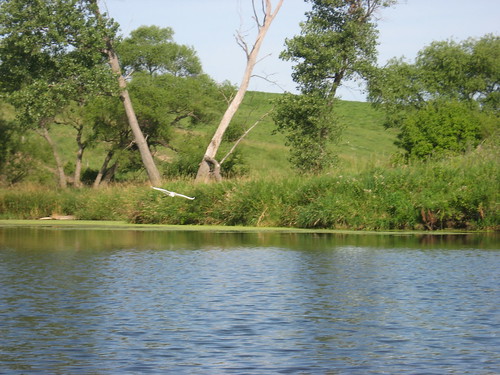
Finally, I arrived back at the dock after my three-hour paddle with no stop. Fortunately, there is a toilet situated just at the head of the dock within the recreation area.
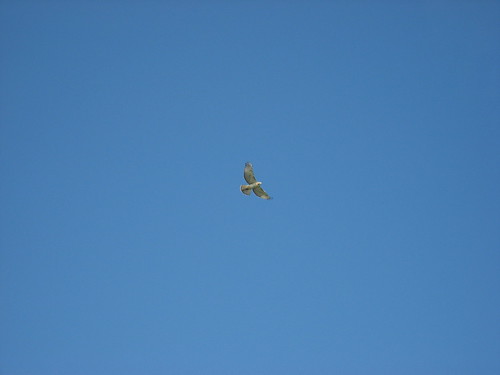
Heading up the west side of the lake and into the river is a very nice cruise. I especially like moving up into the river and all the wildlife that offers. It is also a very isolated area with no powerboats nor anybody fishing. I like this sort of environment, and it is too bad that such a long paddle up the lake seems to always be associated with this cruise. There must be an access point further north, but I haven’t found it as yet. Of course, the cruise would have been a lot easier if I had carefully checked all my gear to ensure that everything was set. It was disappointing not to be able to sail back as I had envisioned.

Interested readers can check out other observations of my cruises on Lake Vermillion by accessing the link on the right side of the blog.

